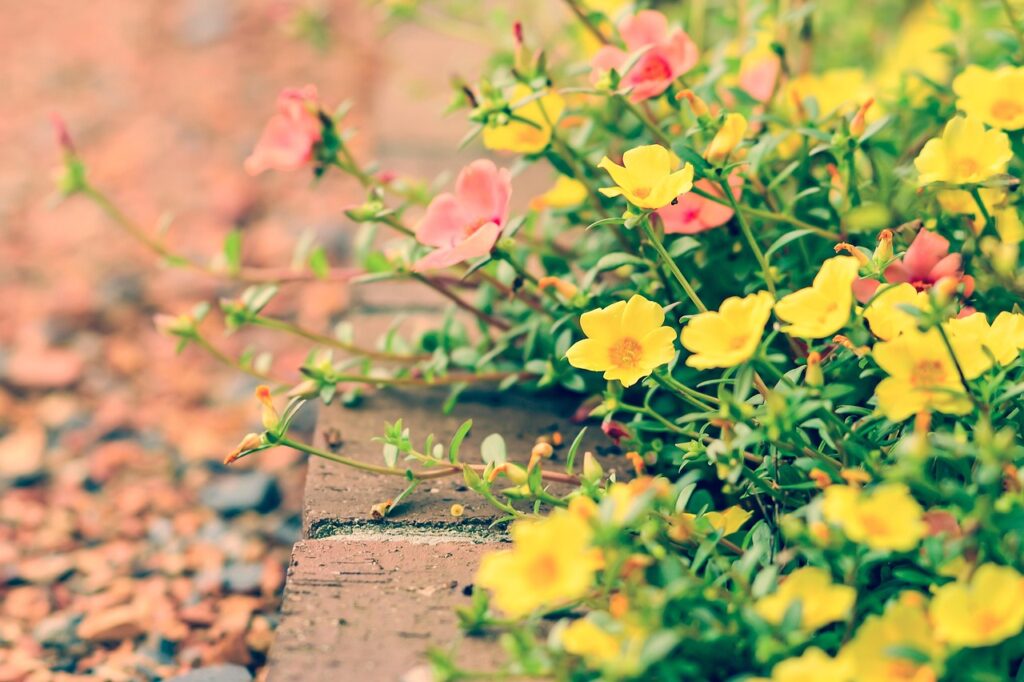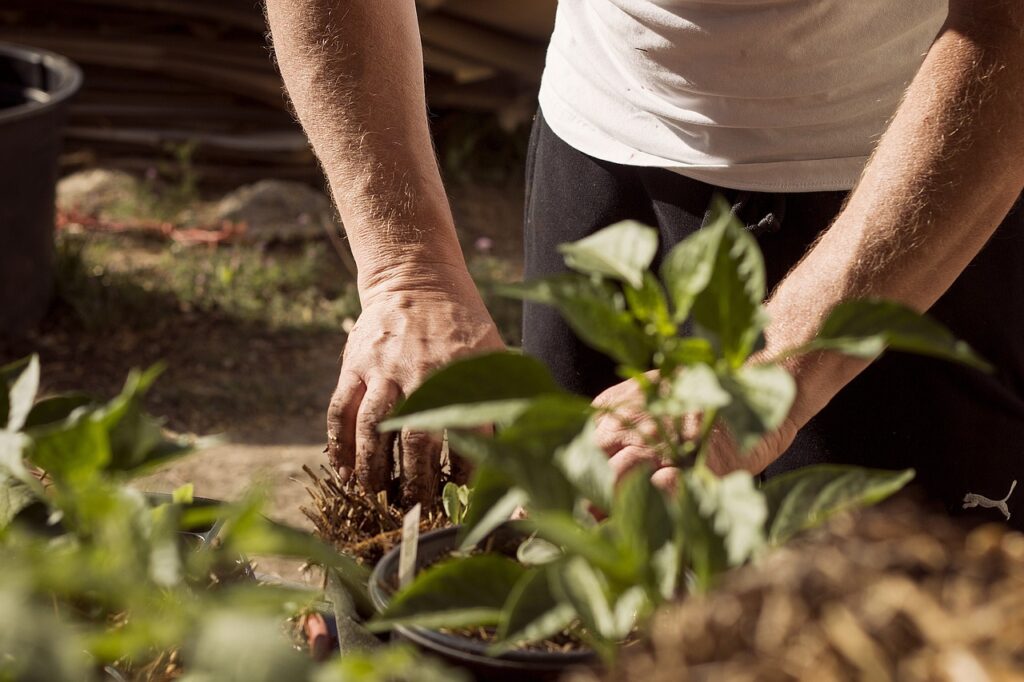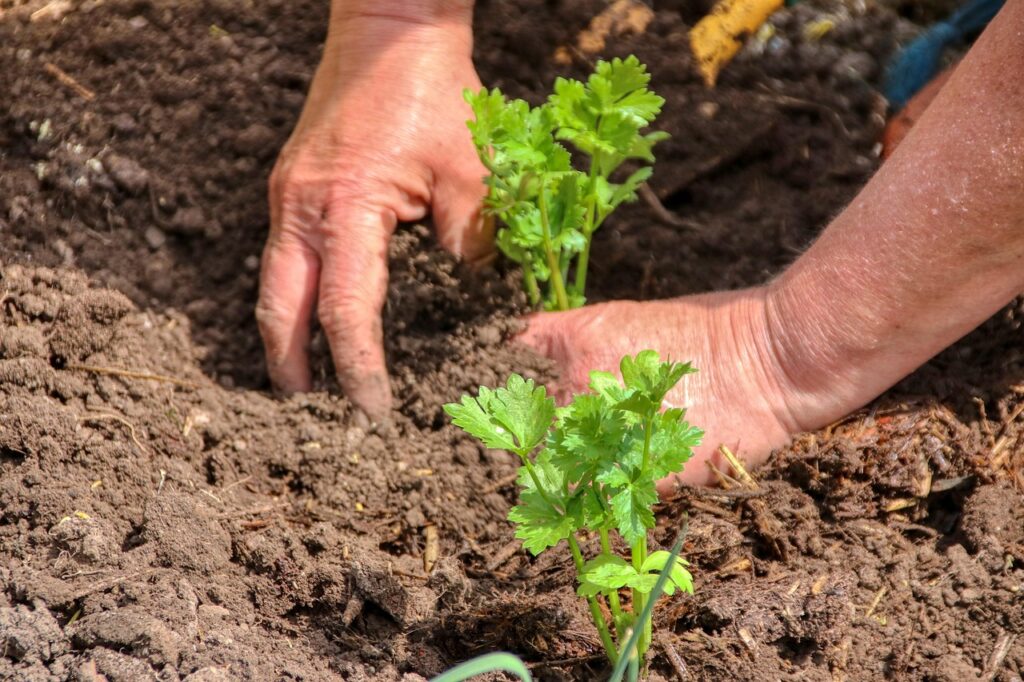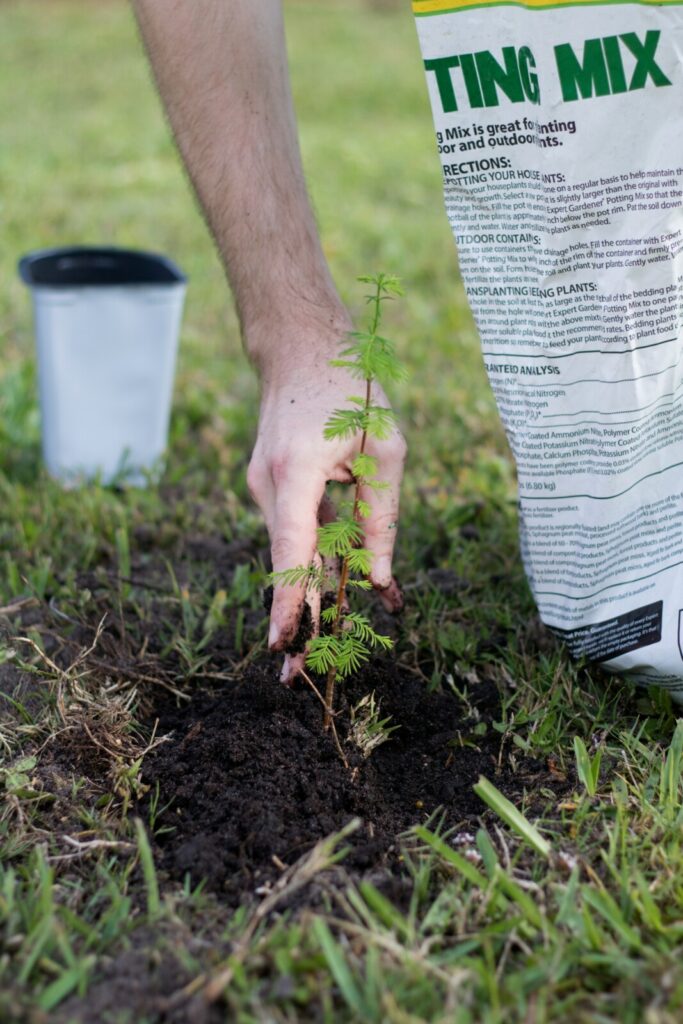by Karen Berry, Fulton County Master Gardener Extension Volunteer
As the temperatures rise, a lot of us are thinking about getting outside in the garden and reflecting on lessons learned.
Whether you’re planting a vegetable garden, ornamentals, trees, or shrubs, answering a few key questions will make a huge difference in growing healthy plants and keeping them looking great!

Who?
How much time and energy do you plan on spending to maintain your plants or landscaping? Are you interested in low maintenance, drought resistant plants, or do you want to commit to caring for more finicky choices? The UGA Cooperative Extension has many resources to assist in plant selection. For example, check out this publication on choosing perennials for sun and for shade. Or this one about choosing rose varieties.
What?
Do a little research on which plants (even which cultivars) suit your conditions. When choosing a plant from the nursery, look at both the top and bottom sides of the leaves for any spots and ensure the root ball is not compacted. Picking healthy plants provides a strong head start to a successful landscape.
When?
Knowing the best time to install plants in your area is a key component of a flourishing yard. Growing seasons differ for different plant types. Spring is the time to start warm season vegetables. Fall is a great time to plant trees and shrubs. Perennials do well when planted in fall or spring. There are many online calendars to help you plan your landscaping. For example, have a look at this Extension calendar for the best times to plant vegetables in Georgia.



Where?
Think about the locations you’ve chosen. Make sure your soil is in good shape. An inexpensive soil test through UGA Extension is a great first step (click here for the easy-to-follow instructions).
Other site considerations for planting include: How big will the plant get? Is there enough sun… too much sun? Are there deer and rabbits nearby? Information about pest-resistant cultivars, companion planting for vegetable gardens and much more can be found on the UGA Extension website. (For example, this article on deer-tolerant ornamentals). Combining a variety of plants with similar sunlight and water needs can make caring for them easier.
How?
Now that you have the right plant and the right spot, let’s get planting! Using the information from your soil test, add amendments to the soil as needed. (Here is a helpful video on how to read your soil test results) Follow the instructions on the plant label, paying close attention to not only the width and depth of the hole, but also spacing between plants.
Water the soil around the new planting until the root ball area is soaked. Drip irrigation or handheld spraying at the base of plants are best as overhead sprinkling methods can result in the spread of fungal and bacterial diseases. Because water needs differ, be sure to read the information about your specific plant. Mulching around plants can help maintain moisture in the summer as well as protect tender plants during the winter season. Avoid the dreaded “mulch volcano” following these instructions.
After answering these questions, you’ll be better informed and prepared to give your plants a healthy life! As always, reach out to your local Extension office if you have questions about how to care for your plants.